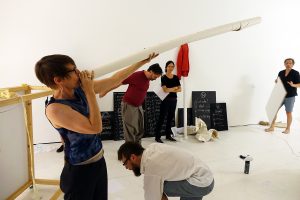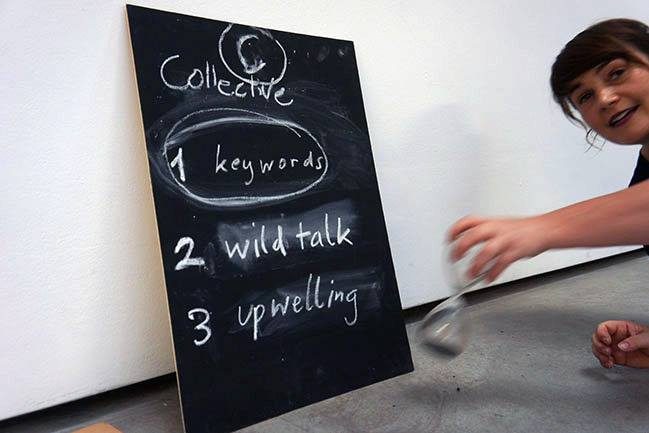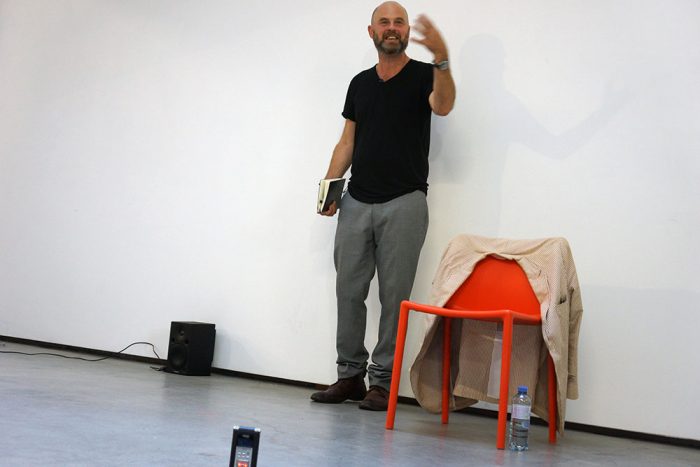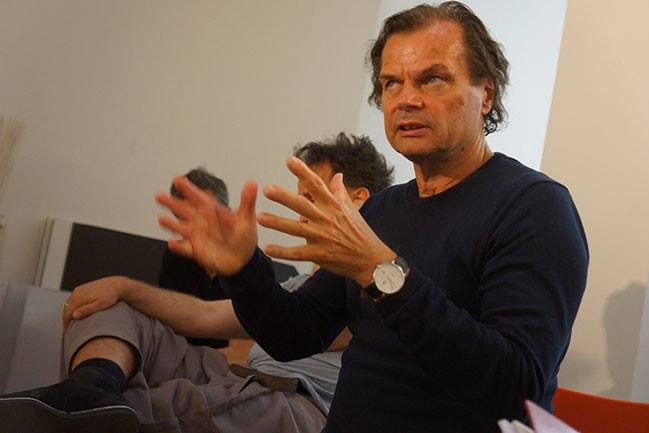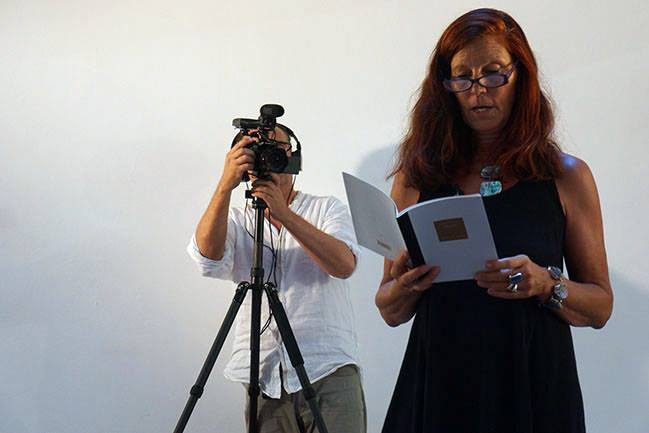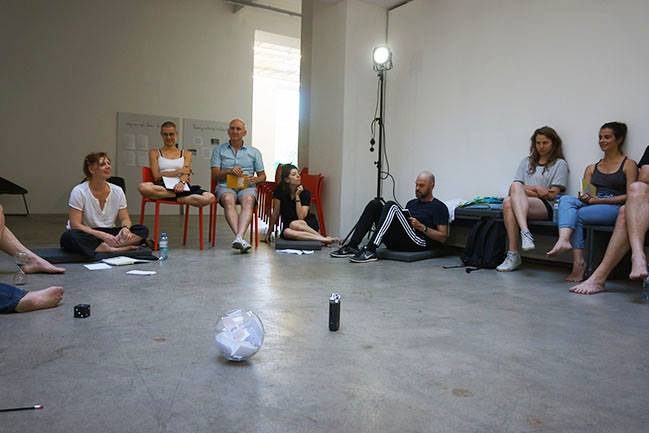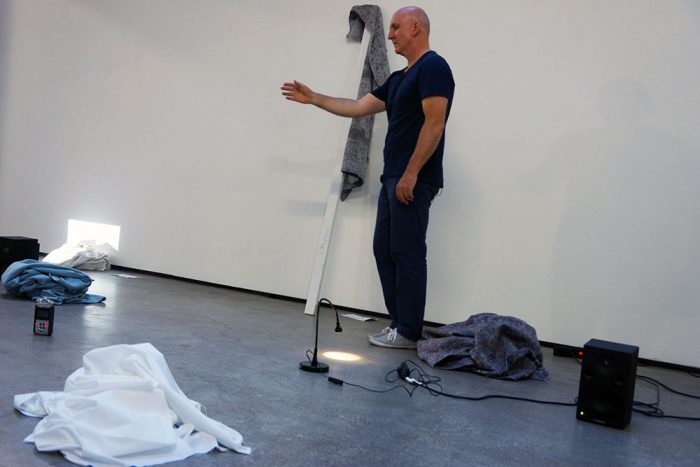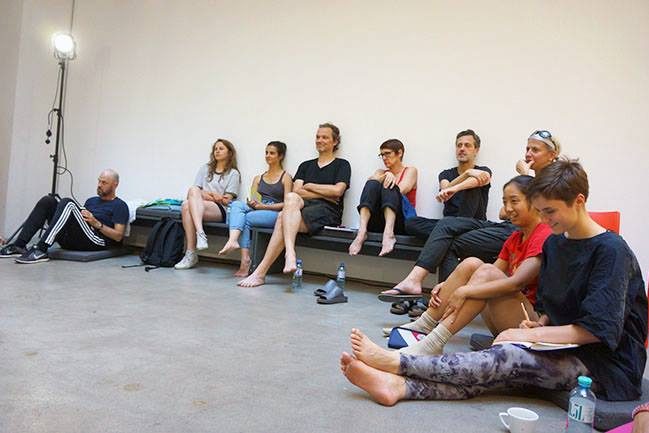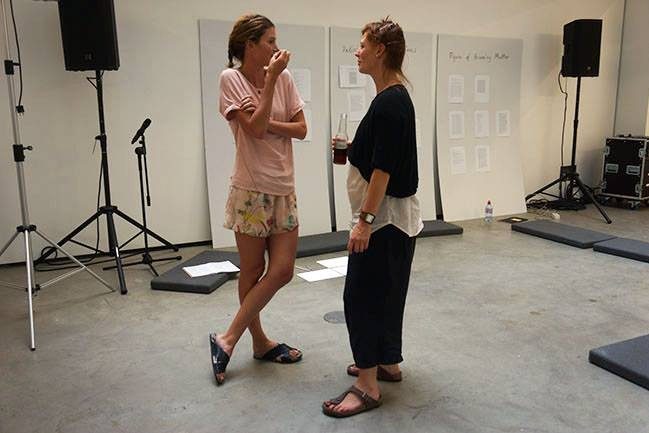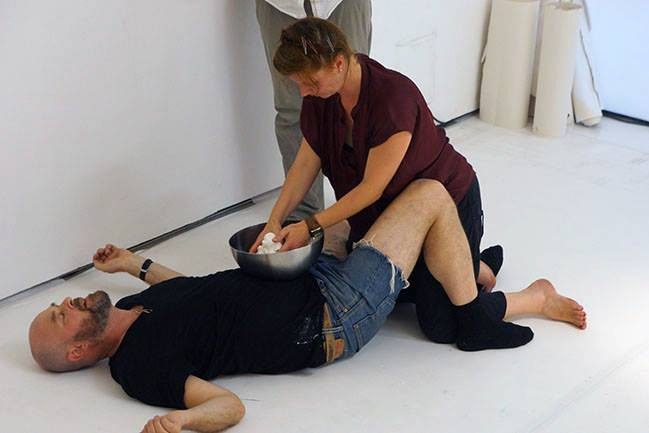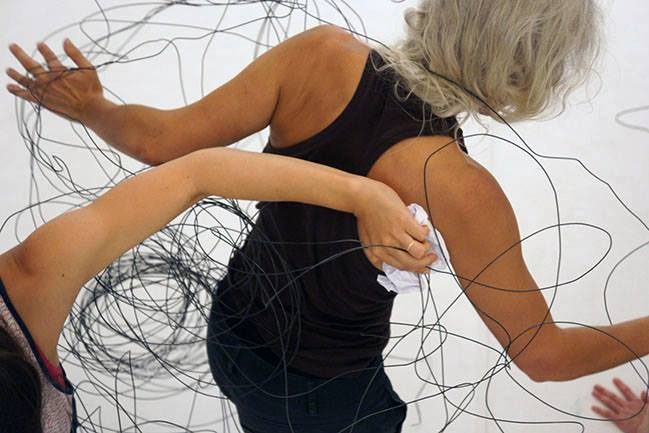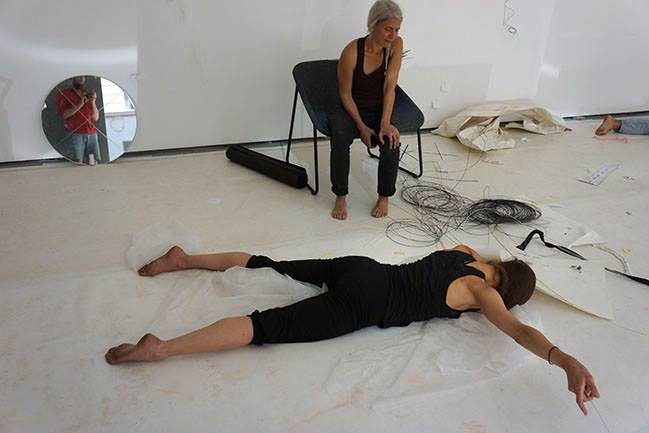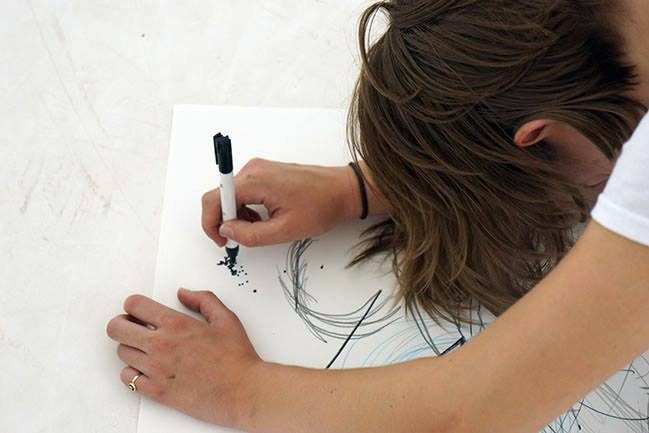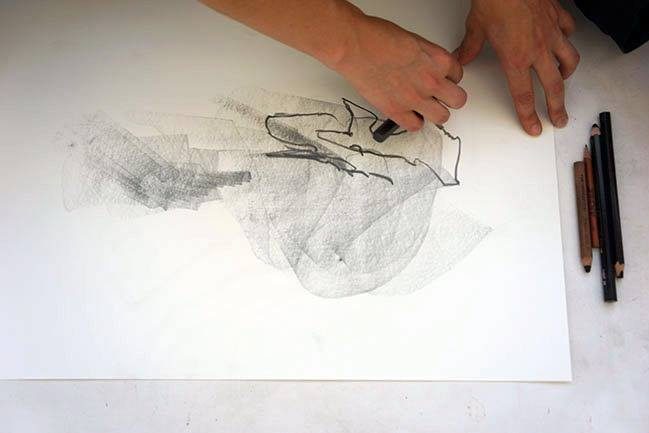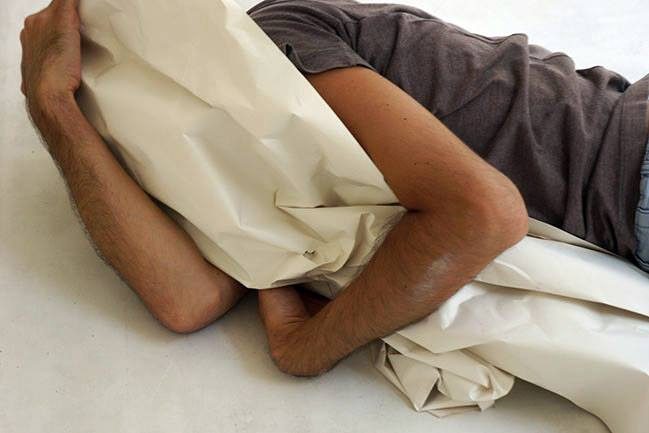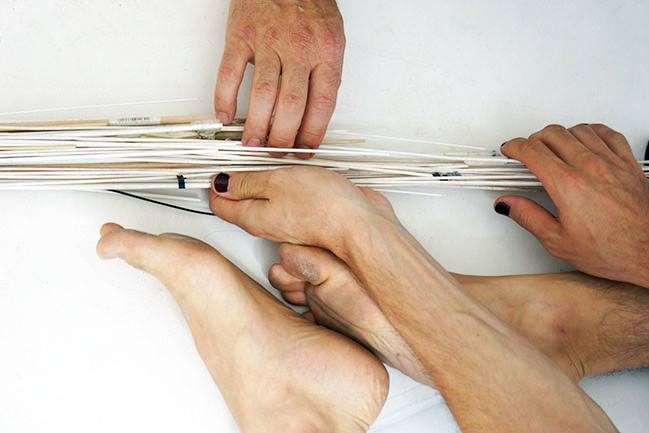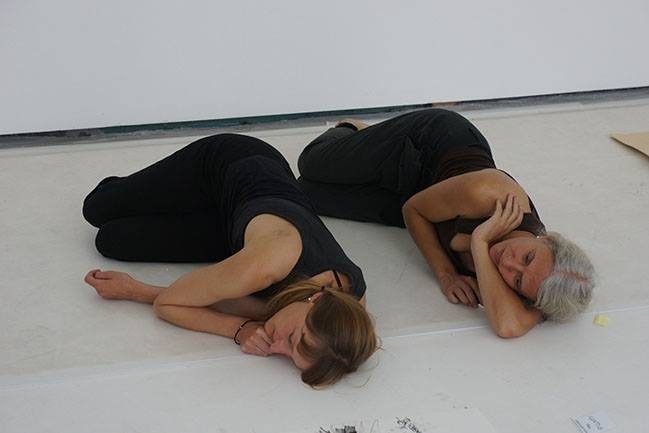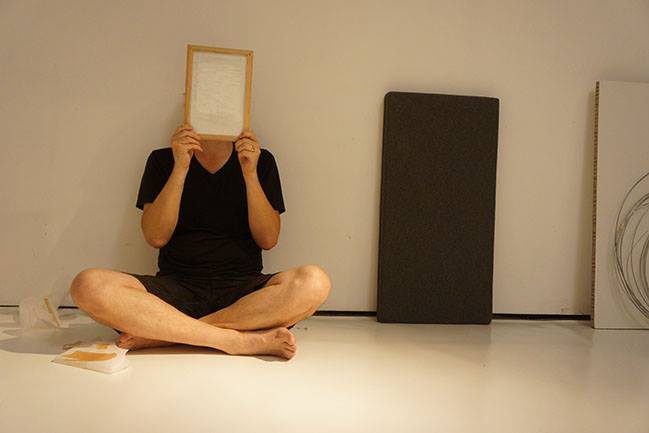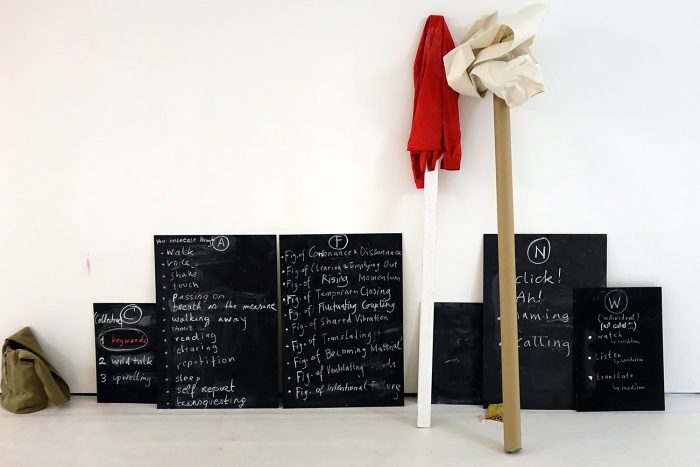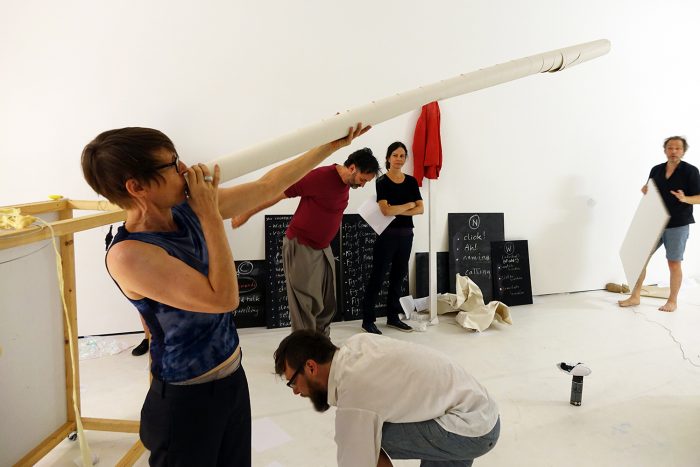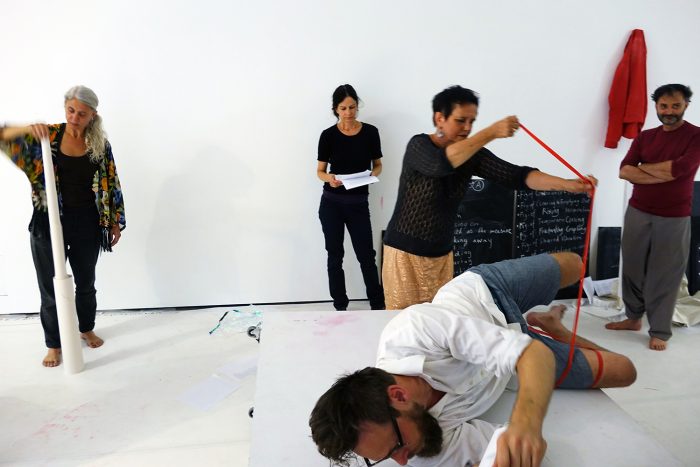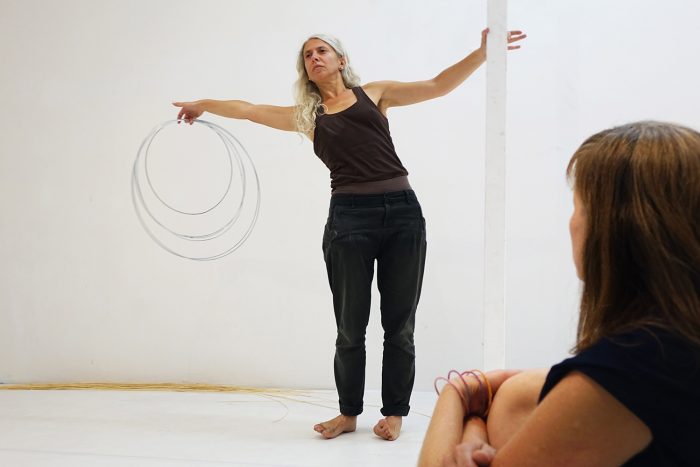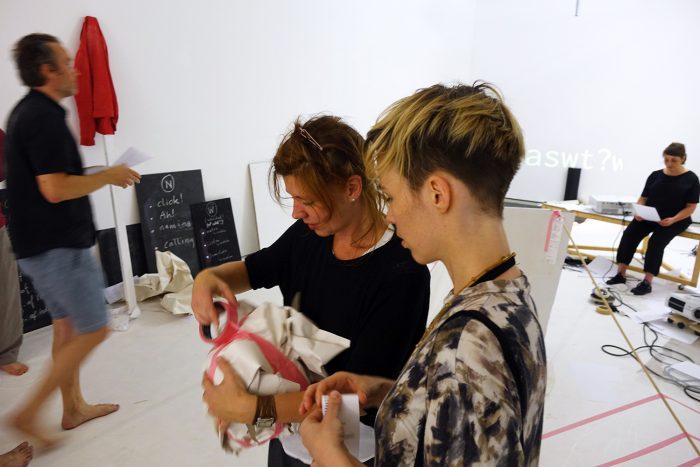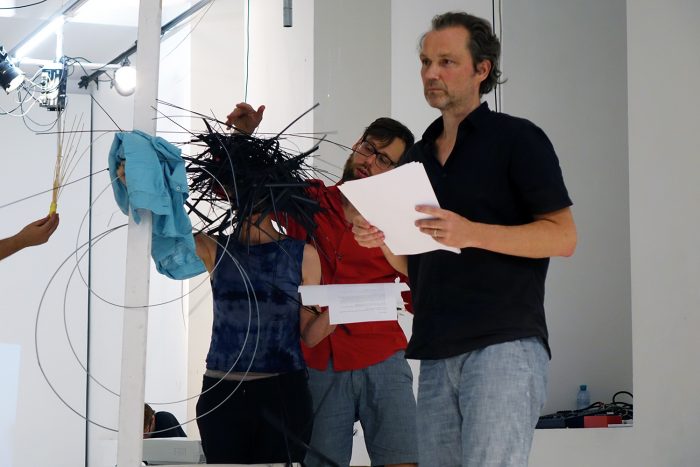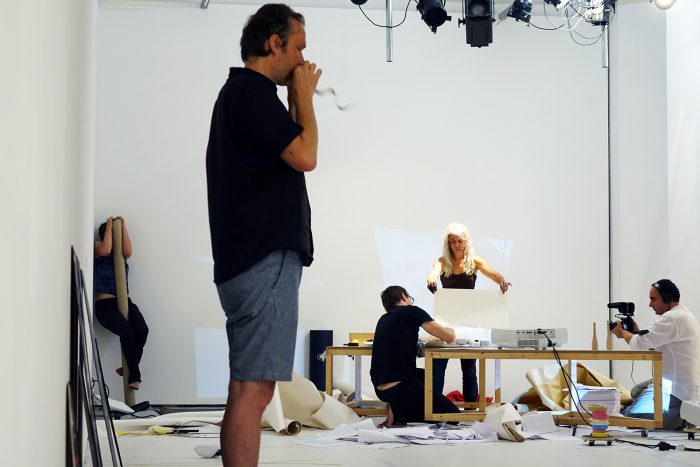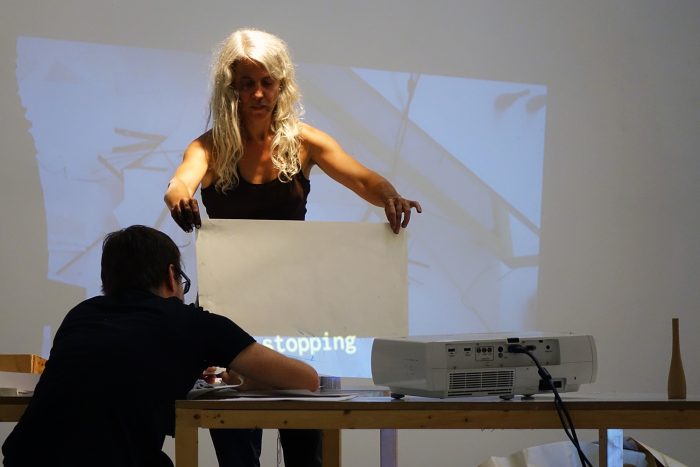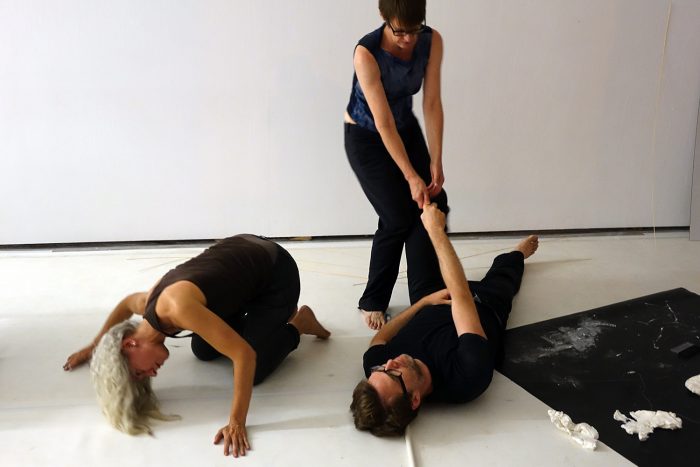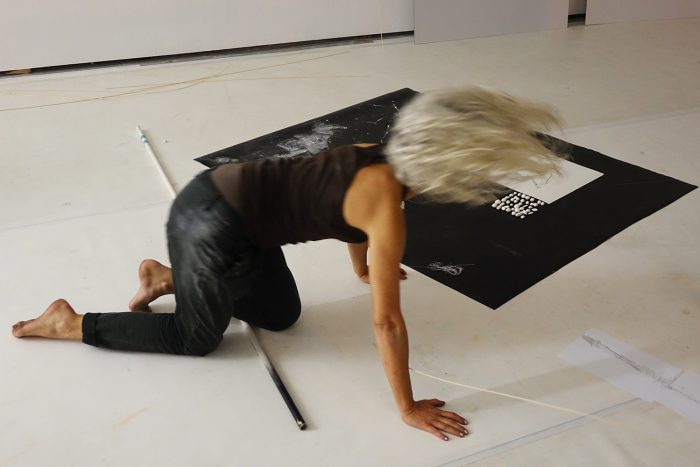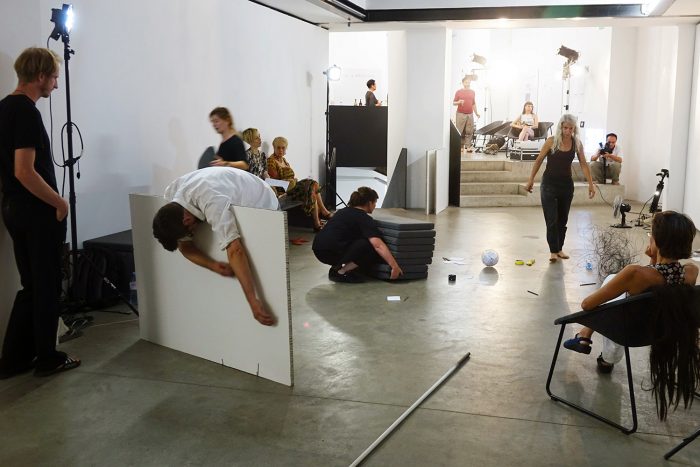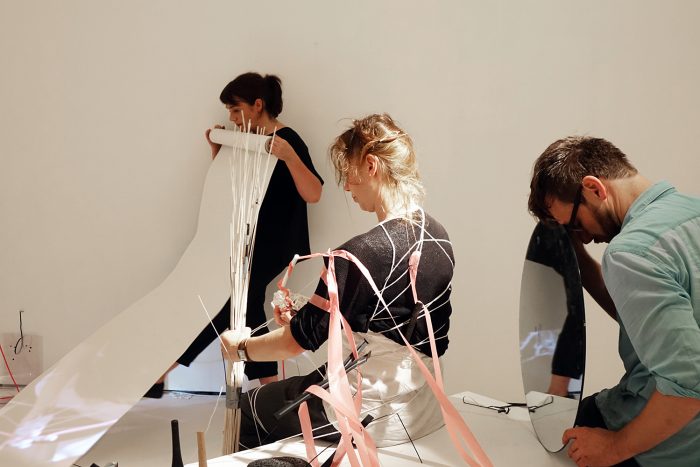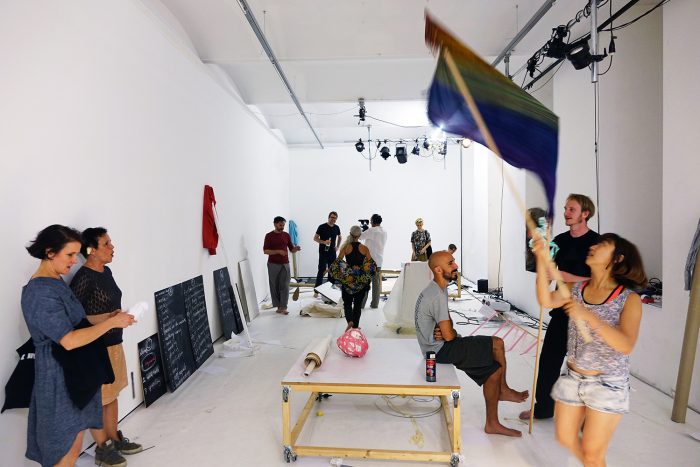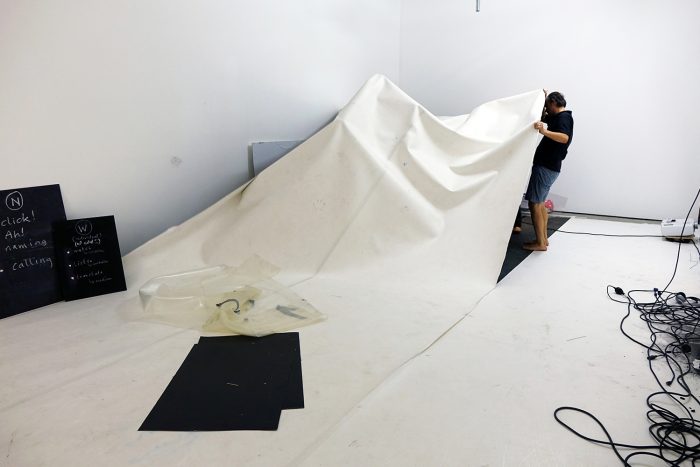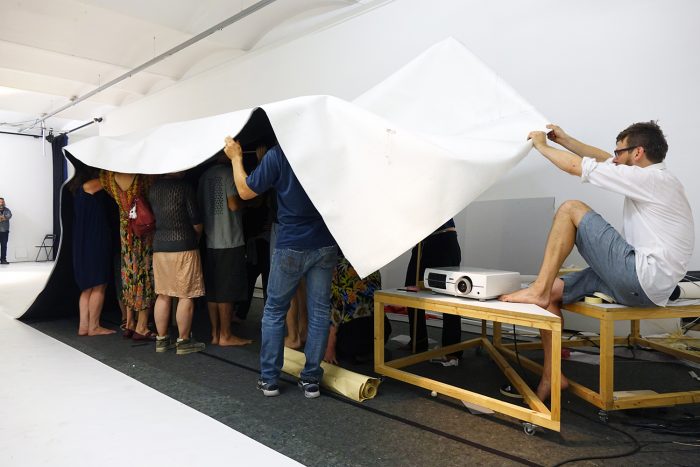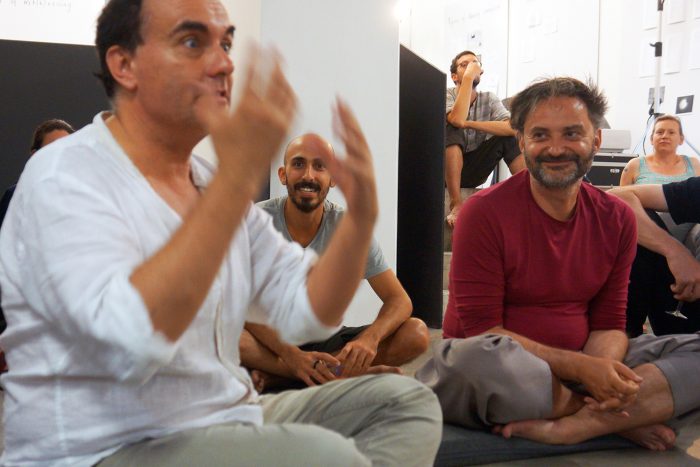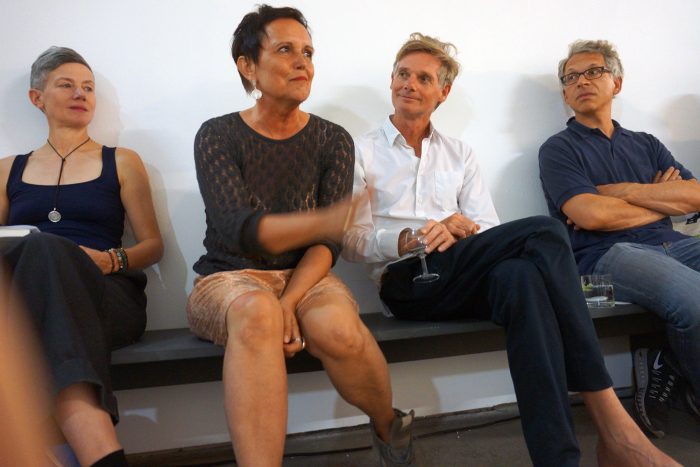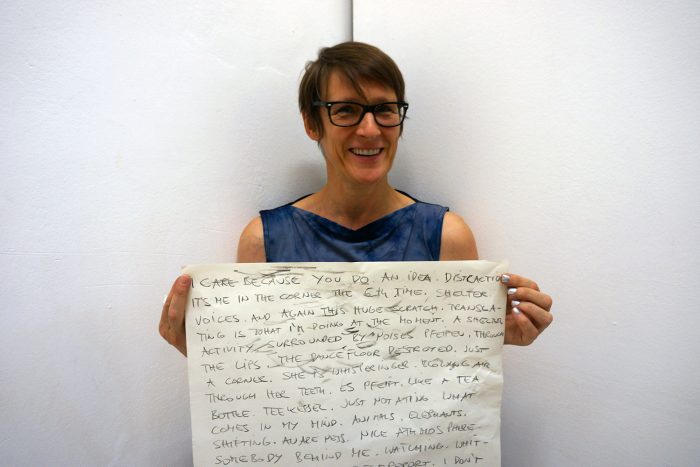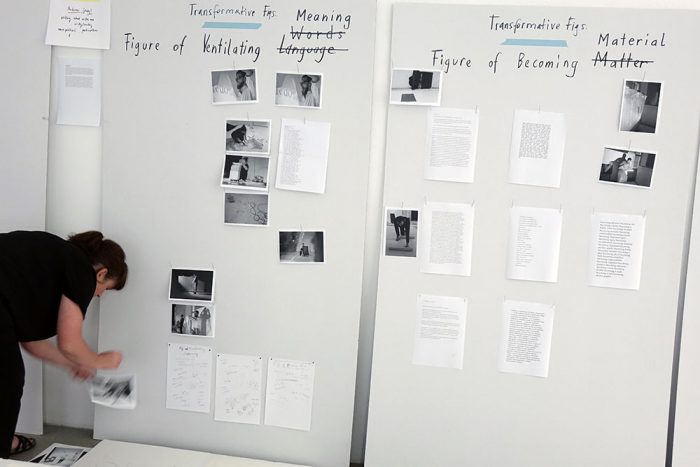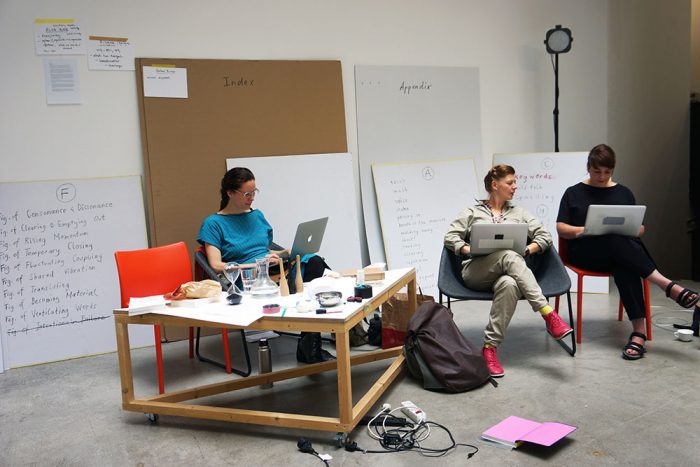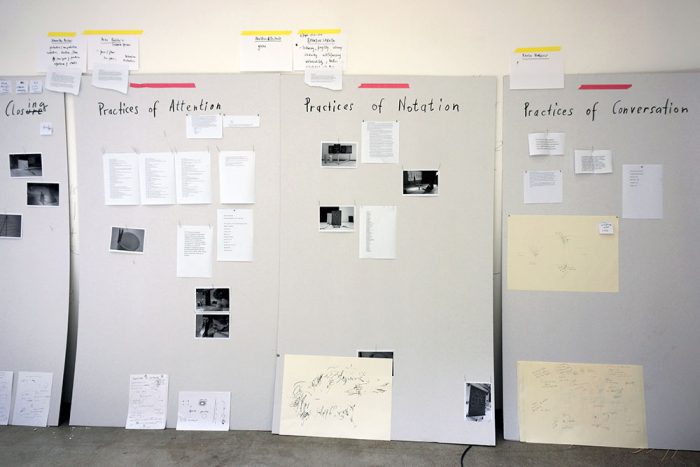14 July – 14 August 2016
AILab, Vienna, in conjunction with ImPulsTanz festival
During the Summer Lab 2016, we – Nikolaus Gansterer, Mariella Greil and Emma Cocker – staged an intensive residency laboratory in collaboration with AILab and ImPulsTanz Festival. In dialogue with a team of international critical interlocutors and guests including Alex Arteaga, Lilia Mestre, Werner Möbius, Jörg Piringer and Christine De Smedt, this research residency focused towards experimental forms of publication, for ‘making public’ the live intensity of our exploration, its moments of discovery and revelation. Over four weeks, we invigorated the various spaces and premises of AILab through an expanded, undisciplinary choreo-graphy including public workshop intensives (addressing Shifts of Attention: vigilance, engagement and translational processes alongside Modes of Languages: Words as Material) in conjunction with a lecture programme and durational performances. During this phase of our project we also worked in the Lab physically drawing together materials from the project that will form part of a forthcoming publication to be launched in 2017.
The Summer Lab involved different phases of activity:
Workshop phase: This Summer we shared our research process through a series of workshops and a public lecture programme. The workshops were part of the ‘visual arts X dance’ programme, a unique workshop & research series within the frame of ImPulsTanz curated by Tino Sehgal, Louise Höjer and Rio Rutzinger, the aim of which was to create an intense exchange beyond established genre borders, by bringing together over forty ‘pairs’ or ‘groups’ of individuals from the field of visual arts working with contemporary dance including:
Pawel Althamer x Meg Stuart; Simone Aughterlony x Jen Rosenblit; Klaus Biesenbach x Tom Stromberg; James Beckett x Renée Copraij; Marcus; Bergner x Myriam van Imschoot; David Bloom; Choreo-graphic Figures: Alex Arteaga x Mariella Greil x Lilia Mestre; Choreo-graphic Figures: Emma Cocker x Christine De Smedt x Nikolaus Gansterer; Phil Collins x Andros Zins-Brown; Tacita Dean x Eszter Salamon; Jason Dodge x Krõõt Juurak; Moriah Evans x Judith Rohrmoser; Alix Eynaudi x Raimundas Malasauskas; Christian Falsnaes x Kareth Schaffer; Wolfgang Gantner (Gelitin) x Julia Rublow (beach); Mario Garcia Torres x Maria Francesca Scaroni; Aldo Giannotti x Philippe Riéra / Superamas; Trajal Harrell x Anri Sala; Maria Hassabi x January Mot; Calla Henkel x Max Pitegoff x Angela Schubot; Koo Jeong A x Jennifer Lacey; Astrid Kaminski x Christian Cobalt; Justin F. Kennedy x Jeremy Shaw Joachim Koester x Ligia Lewis; Adam Linder x Shahryar Nashat ; Sebastian Matthias x Jimmy Robert; Ari Benjamin Meyers; Thomas Oberender x Hans Ulrich Obrist; Sergei Pristas x Georg Schöllhammer; Asad Raza x Mårten Spångberg x Adrian Villar Rojas; Vincent Riebeek x Jordan Wolfson; Michele Rizzo.
Our Choreo-graphic Figures workshops took place over two intensive weekends:
Intensive I: Shifts of Attention: vigilance, engagement and translational processes
This intensive weekend workshop event began with guest lectures on Friday 22 July at AILab by Dieter Mersch (“Figuration/Defiguration. On the dialectics of”Choreo-Graphy”) and P. A. Skantze (“I’m A Strange Kind of In-Between Thing” ). Then over the weekend (23 – 24 July) we worked with over 10 workshop participants including both Mersch and Skantze to explore different dynamics and shifts of attention, modes of engagement and relational intensities emerging through crossing fields of practice. Within this intensive workshop our focus was on investigating somatic practices with special care for cultivating alertness to compositional decision-making within a collaborative creative process, and the development of an expanded system of notation based on vitality gestures as embodied diagrammatics. Specifically, during this workshop we put pressure on the various Practices of Attention developed through our research, exploring their relation to both the experience of figuring and the generation of figures. How do attention practices augment (heighten, deepen, widen) perceptual awareness and alertness? How do such practices impact the relational dynamic of collaboration, increasing one’s receptivity, availability and sense of connectedness? What is the impact of this process of attunement on aesthetic exploration?
Intensive II: Modes of Languages: Words as Material
This intensive weekend workshop event began with guest lectures on Friday 29 July by Brandon Labelle (“This Weakness That I Am”) and Alva Noë (“Writing Ourselves”). Then over the weekend (30 -31 July) we worked with a group of participants including Labelle and Noë to explore the notion of words as material, and the liberation of language from the regime of signification and informational exchange towards an embodied poetics. Evolving previous research around the reverberation of speech and voice and the embodiment of text, we continued our investigation around the aesthetic-epistemological gesture of artistic (re)searching, explored through the transformation of words and language, the act of rolling language around in the mouth as a physical practice. Specifically, during this workshop we introduced participants to the various elements within the permutational score system that we have been developing through our research, testing different components including selected Practices of Attention and core Figures through shared live exploration together.
Durational performance
Extending the sense of ‘making public’ cultivated through the workshops, on Tuesday 2 August 2016 from 16:00-22:00 we staged a public durational performance at AILab which was also attended by invited critical witnesses including Andreas Spiegl, Helmut Ploebst, Arno Böhler, Susanne Valerie Granzer, Jeanette Pacher, Karin Harrasser, Krassimira Kruschkova, Gabrielle Cram. Comprising performative, discursive and installation based elements, the performance exploration unfolded as a six-hour durational Radical Score of Attention, where members of the public were invited to come and go, to dwell and linger. Embodied diagrams, notational experiments, relational and translational encounters shaped an ever-changing assemblage of choreo-graphic figures; attention heightened towards a barely perceptible realm of micro-movements and micro-gestures, the shifts of awareness and affordance activated in the side-by-side of collaborative exchange, opened up through the interference of space, sound, body and material.
Our durational performance was structured using the permutation score system that we have developed through our research, interweaving different performative fields of activity – aesthetic investigation sharpened through attentional and conversational practices, and the intimacy of wit(h)nessing.
A — Attention practices: practices for sensory heightening and hyper-sensitizing, for cultivating empathetic attention, perceptual awareness, qualities of alertness and receptivity to the compositional decision-making within a collaborative creative process, including: (1) Walk; (2) Voice; (3) Shake; (4) Touch; (5) Passing On; (6) Breath as the Measure; (7) Walking away; (8) Shout; (9) Reading; (10) Clearing; (11) Repetition; (12) Sleep; (13) Self Report; (14) Transquesting.
C — Conversation practices: words as material for playful appropriation and reworking, dialogue as a live site for initiating collaborative and inter-subjective ‘figures of speech’. (1) Key words: a game of unexpected lines of thought drawn through provocation and timed response; (2) Wild talk: quick and immediate, overlapping voices offer illumination and insight; (3) Upwelling: beyond an individual response, a collective per-forming of an emergent language, voicing of the situation.
F — Aesthetic investigation comprising a system of interlocking choreo-graphic figure fields which at this point in the project we named as: the Elemental figures of Clearing and Emptying Out, the figure of Rising Momentum, and the figure of Temporary Closing (all critical moments in the arc of creative practice); the Empathetic figures of Consonance and Dissonance, of Fluctuating Coupling, and of Shared Vibration (each cultivating heightened sensitivity to the relation of one’s body in space, in relation to others and to objects); the Transformative figures of Becoming Material, the figure of Ventilating Language, the figure of Translation and of Intentional Failure.
W — Wit(h)nessing: To witness, an act of ‘being with’. Boundaries dissolved between audience and action. Porous performance: no passive observance, no inside/outside. Personal presence and perception create the conditions for what unfolds. Wit(h)nessing modulated through emphasis on sensory shifts (from looking to listening), through the impersonal intimacy of viewing devices, or performed through the embodiment of translation.
Additionally, we further structured the durational performance through a new element: the notion of the episode – a period of time marked by a ‘called’ beginning and an ending within which a particular unscripted configuration of figure-figuring would emerge. Central to our investigative performance remained the principle of notation, the question of how to mark or make tangible the moments of figuring, the small yet transformative energies, emergences and experiential shifts which operate before, between and beneath the more readable gestures of artistic practice.
Critical questioning: Prior to, during and following the workshops and performance, we engaged in an intensive phase of reflection, working with project interlocutors – Alex Arteaga, Lilia Mestre, Christine De Smedt – to put pressure on the different facets of our enquiry and its research vocabulary. We continued also to work with designer Simona Koch to explore ways for transforming our shared knowledges into book form. From the 4 August onwards, our attention shifted more directly towards developing the structure and content for the project publication where we will present the findings of our research, the core conceptual, methodological and aesthetic discoveries made during Choreo-graphic Figures: Deviations from the Line. By grappling with the physical components of the publication as a form of live exploration in and of itself, we were able to discern a structure comprised of textual-visual chapters including the Undisciplinary, Figure >< Figuring, Embodied Diagrammatics, which will be presented alongside an elaboration of the Method Lab model itself, artists’ pages for the various Figures that we have developed through our research process, and an extended expositional section for articulating a ‘toolkit’ of working approaches related to the Practices of Attention, Notation, Conversation and Wit(h)nessing. Additionally, our publication will comprise contributions from many of the critical wit(h)nesses who have encountered our evolving research including Alex Arteaga, Arno Böhler and Susanne Valerie Granzer, Gabrielle Cram, Christine De Smedt, Karin Harrasser, Krassimira Kruschkova, Brandon Labelle, Lilia Mestre, Dieter Mersch, Werner Möbius, Alva Noë, Jeanette Pacher, Jörg Piringer, Helmut Ploebst, P. A. Skantze, Andreas Spiegl.
The comprehensive publication Choreo-graphic Figures: Deviations from the Line will be published in the edition of the University of Applied Arts Vienna on artistic research at De Gruyter Publishers in 2017. Themes that we have invited for consideration include an exploration of:
- Aesthetic research through the prism of enactivist theory;
- Tactics of organisation/reorganization and the notion of affordance;
- Critical curiosity and creative impulse;
- The forces, flows and intensities at play within the time-space of artistic research;
- The fluidity of co-emergence;
- The time-space of the studio/lab, the durations and temporalities of artistic practice;
- The play between attention and inattention, between productivity and non-productivity within the cycle of artistic labour;
- Practices of resistance to utilitarianism or instrumentalisation, to dominant modes of production and the market;
- The entanglement of experimentation and experience within collaboration and participation;
- Possibilities for action and ethics beyond the normative within both aesthetic exploration and the wider societal field;
- Non-categorical thinking, experimentation, plasticity and essaying as ways of avoiding closure;
- The fragility, intimacy and solidarity arising from our entanglement with others, alongside the surfacing of ethical sensitivities;
- The nano-political potential of minor movement-acts within aesthetic exploration and their reverberation within the wider societal field.
